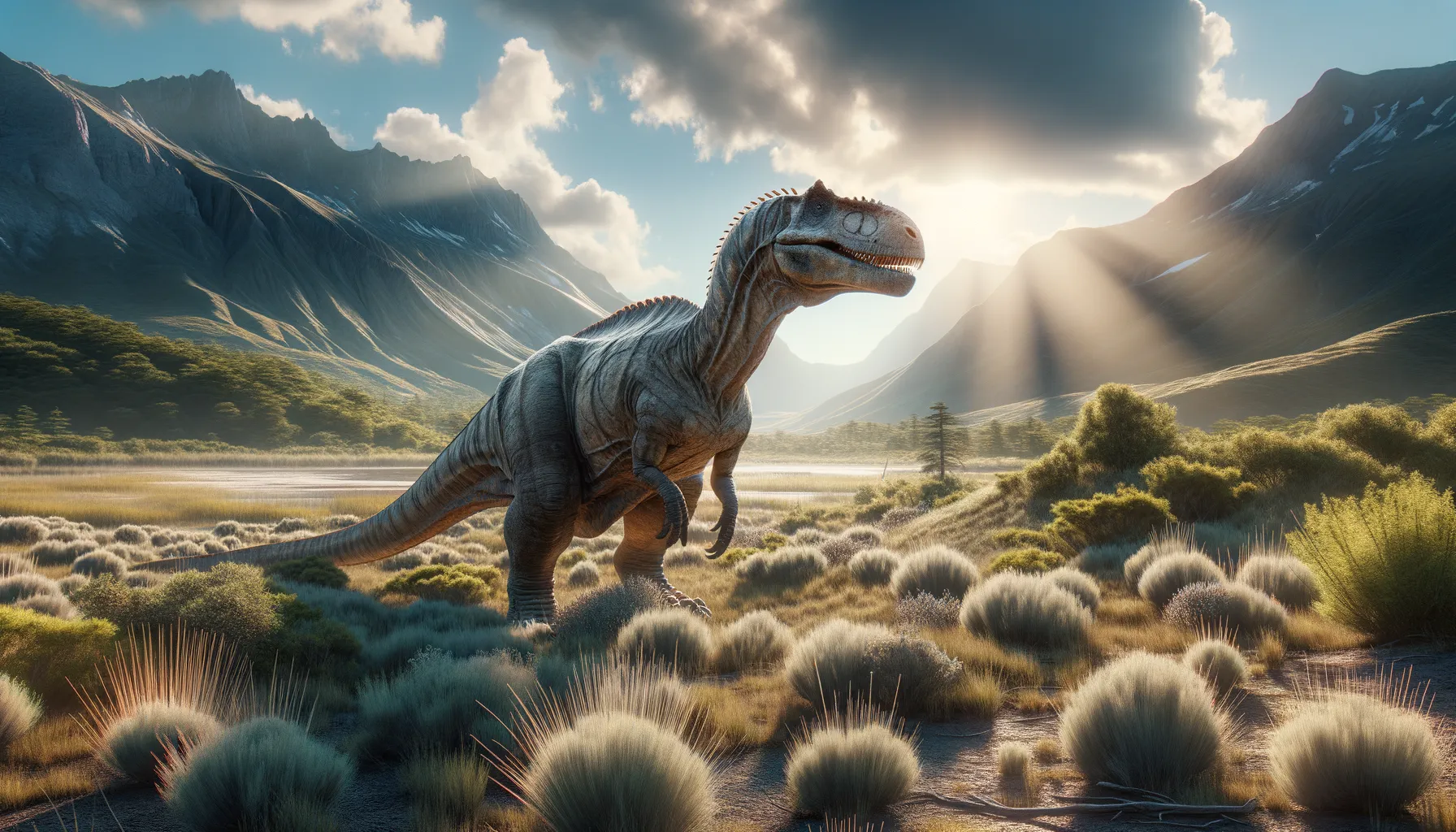
Leonerasaurus
A glimpse into early sauropod history.
Period
Jurassic
Length
Estimated to be about 3 meters (9.8 feet).
Height
Approximately 1 meter (3.3 feet) at the hip.
Weight
Around 300 kilograms (660 pounds).
Leonerasaurus was an early member of the sauropodomorph lineage, living during the Early Jurassic period. Known from fossil remains found in Argentina, it provides crucial insights into the transition from early sauropodomorphs to the giant sauropods. As a relatively small dinosaur, it has helped paleontologists understand the evolutionary path that led to the colossal sizes seen in later sauropods. Its discovery has contributed significantly to the understanding of dinosaur evolution in the Southern Hemisphere.
Diet
Leonerasaurus was herbivorous, feeding on low-growing vegetation. It likely consumed a variety of plants, including ferns and cycads, available during its time.
Hunting
Being a herbivore, Leonerasaurus did not engage in hunting. It likely spent much of its time foraging for plants and using its long neck to reach a wide range of foliage.
Environmental challenges
Leonerasaurus faced various environmental challenges such as climate changes and competition for food with other herbivorous species. The Early Jurassic period saw shifts in vegetation, requiring adaptability in diet. Its survival depended on its ability to exploit available plant resources efficiently and to avoid becoming prey for larger carnivorous dinosaurs.
Speed
Slow, likely to move at a leisurely pace.
Lifespan
Estimated to reach several decades.
First discovery
Discovered in Patagonia, Argentina in 2001.
Fun Facts
- Leonerasaurus lived during the Early Jurassic period, which means it roamed the Earth around 190 million years ago!
- This dinosaur was found in what is now Patagonia, Argentina, known for its rich fossil history.
- Leonerasaurus was a sauropodomorph, which is a group that includes the giant long-necked dinosaurs, although it was much smaller!
- Unlike its gigantic relatives, Leonerasaurus was only about 3 meters in length, which is roughly the size of a small car.
- Despite its size, Leonerasaurus had a long neck, which it likely used to reach vegetation high up in trees.
- Paleontologists believe that Leonerasaurus had adaptations for both walking on two legs and all fours, making it quite versatile.
- The discovery of Leonerasaurus helps scientists understand the early evolution of gigantic sauropod dinosaurs.
Growth and Development
Leonerasaurus likely grew consistently throughout its life, with its size enabling it to access diverse plant materials. Juveniles might have had different dietary requirements compared to adults. Analysis of fossils suggests that it followed a pattern of growth common among early sauropodomorphs, reaching maturity at a relatively slow pace.
Habitat
Residing in what is now Patagonia, Leonerasaurus lived in environments with abundant vegetation. This region was part of Gondwana, characterized by diverse ecosystems, including forested areas and open landscapes. It thrived in habitats where plant life flourished, supporting its herbivorous diet.
Interaction with other species
Leonerasaurus interacted with other herbivorous species, competing for resources in its environment. Its interactions also included avoiding predators that might target it as prey. Fossil evidence indicates it coexisted with various other dinosaurs, contributing to the complex ecosystem dynamics of its time.
Natural lifespan
Leonerasaurus might have had a natural lifespan spanning several decades.
Reproduction
Leonerasaurus likely reproduced by laying eggs, a common trait among dinosaurs. Fossil evidence from similar species suggests that it may have practiced some form of nesting behavior. Parental care is not well-documented, but the cluster distribution of eggs in related species hints at possible protective behaviors.
Social behaviour
Leonerasaurus may have exhibited some social behavior, possibly moving in groups or small herds for protection and foraging efficiency. This behavior could have enhanced their survival by reducing the risk of predation and enabling cooperative care of young.
Fossil locations
Fossils of Leonerasaurus have primarily been found in Argentina, specifically in the northern Patagonia region. The specimen site has provided valuable fossils that enhance the understanding of early sauropodomorph evolution. These findings have been crucial in studying the distribution and diversity of dinosaurs in ancient ecosystems of South America.
